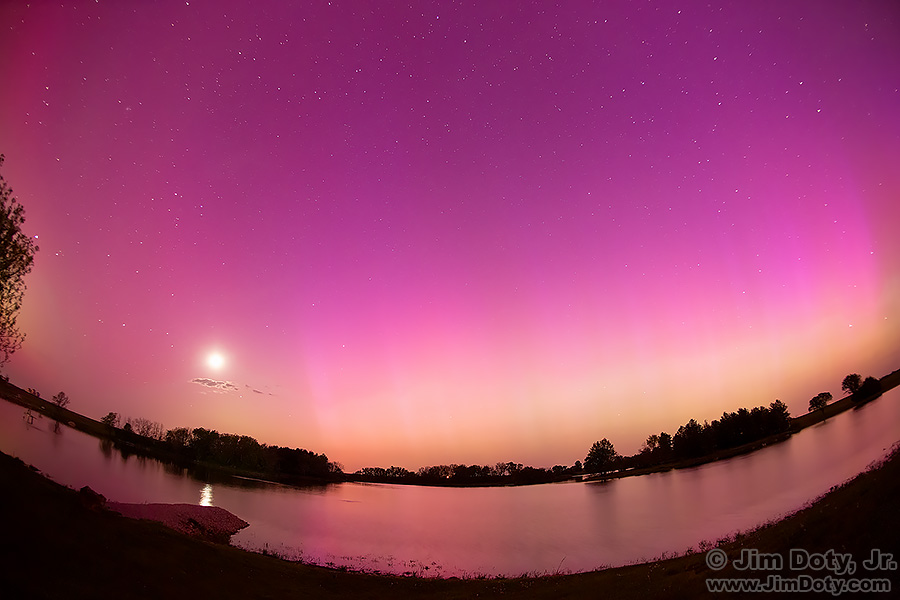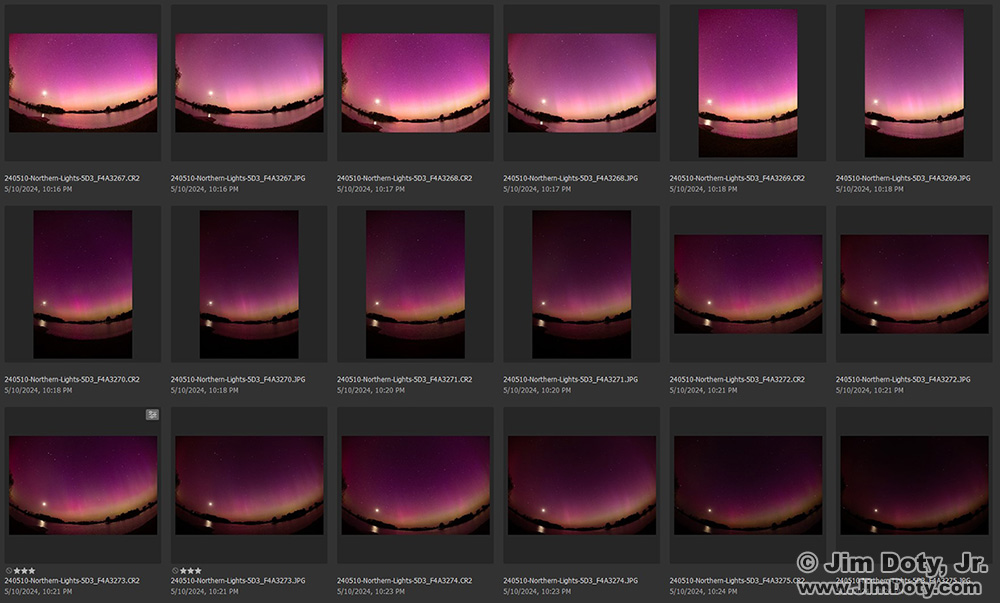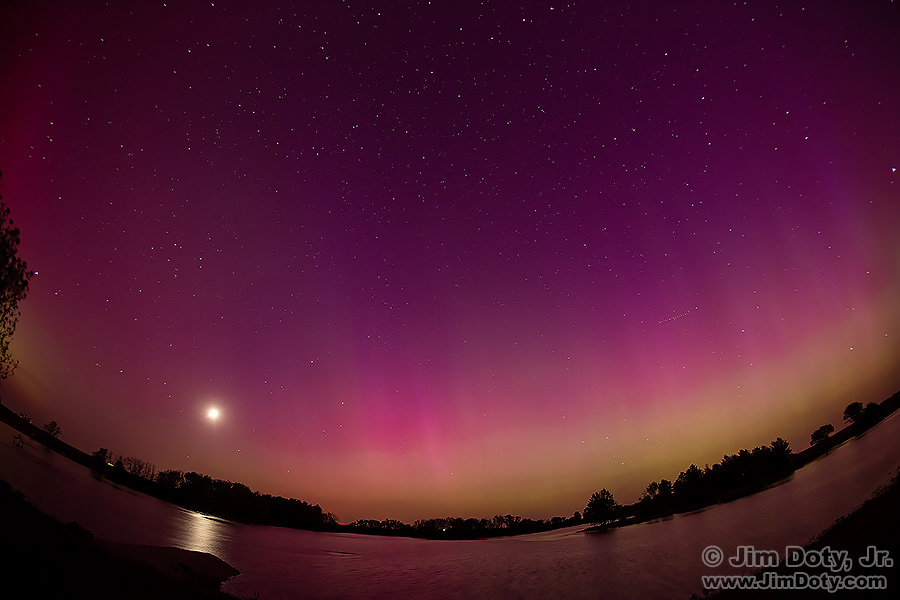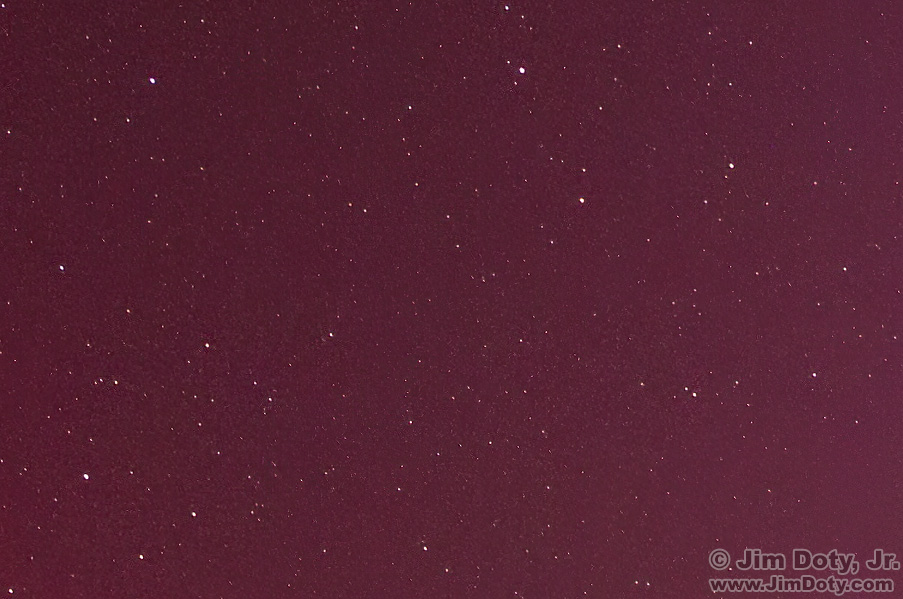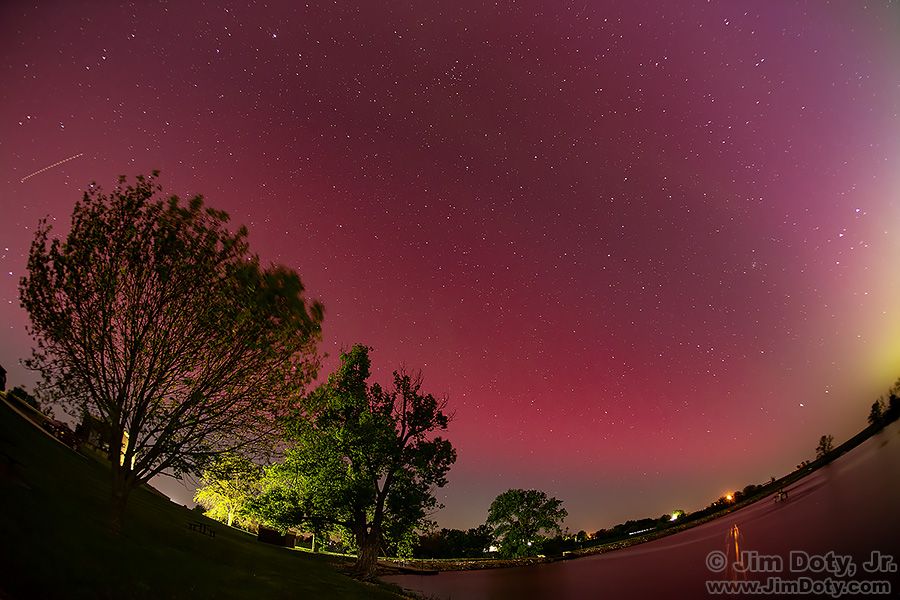The Northern Lights were spectacular last night in south central Iowa. The above image was my first click of the shutter. I was at Home Lake near Lamoni Iowa. When I arrived shortly after 10 pm, there were already a half dozen cars at the lake with people looking at the Northern Lights and many of them were taking pictures with every from smart phones and tablets to tripod mounted cameras. Tonight is predicted to be another great night. If you want to take pictures and need some advice, see the first link below. The other links are helpful too. Click any image in this article to see a larger version.
In this screen capture of Adobe Bridge, you can see my first 9 photos out of a total of 81 last night. (My camera captures both a RAW and JPEG image each time I click the shutter.) I was using a 15mm semi-fisheye wide angle lens with a 180 degree diagonal angle of view. This lens bends straight lines near the edges of the frame. I wanted to take in as much sky as possible. The ISO on my camera was set to 2000, the lens aperture was at f/4, and my shutter speeds varied from 4 seconds to 30 seconds. I always bracket exposures when shooting Northern Lights by using several different shutter speeds. I did both horizontal and vertical photos.
For my initial images my camera was pointed to the northwest at the greatest intensity of the Northern Lights. In this image I like the varied striations reaching up into the sky from the horizon.
There are a lot more stars than you can see in these web sized images. This is very small area from the center of the prior image. When images are reduced in size for the internet, most of the dimmer stars disappear.
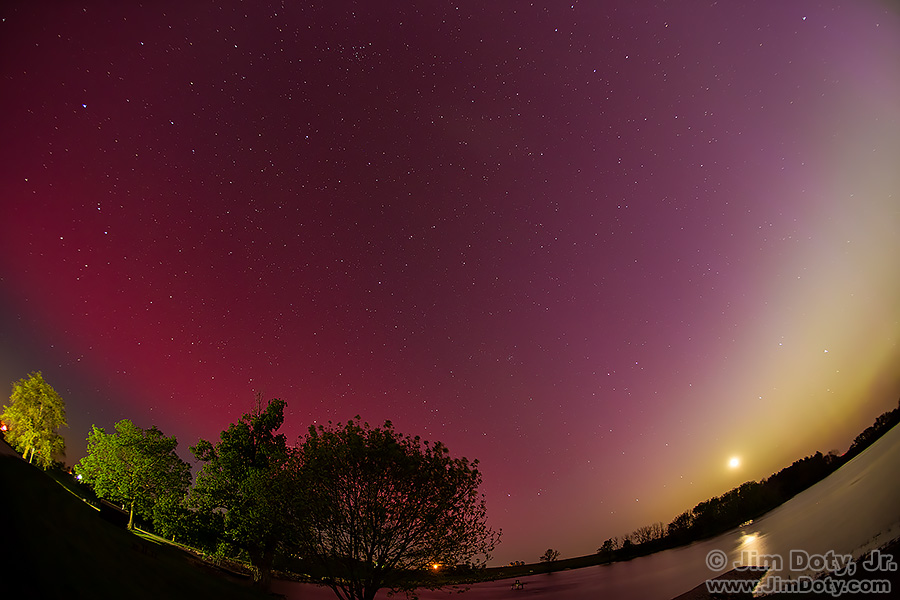
Northern Lights, Home Lake. The bowl of the Big Dipper is at the top of this image and to the right of center. Polaris, the North Star is at the top right. Leo is in the middle, left of center, and his head is above the biggest tree.
Within 20 minutes of my arrival, the Northern Lights to the northwest had turned mostly green. So I pointed my camera to the southwest. The reddish color in that direction was not visible to the naked eye thanks to the very faint aurora and Purkinje Effect, but my camera could easily record the reddish tones. I told other people nearby to point their cameras toward the southwest sky above the nearby trees and they began to capture the red tones in their images. Even if your eyes don’t see any reddish tones in the sky, take pictures in different directions anyway. You camera might find reddish Northern Lights that are too faint for your eyes to see. To the right you can see an auroral band of yellow-green light which was easily visible to our eyes.
I moved closer to the lake to get a better angle on the reddish Northern Lights above the trees.
Go out and have fun tonight!
Links
How To See and Photograph the Northern Lights
The “Purkinje Effect”: Colors Your Eye Can’t See But Your Camera Can
How To Focus Your Lens at Infinity for Night Photography
How To Get Critical Focus in “Live View” Mode with a Magnified Image
More Links

